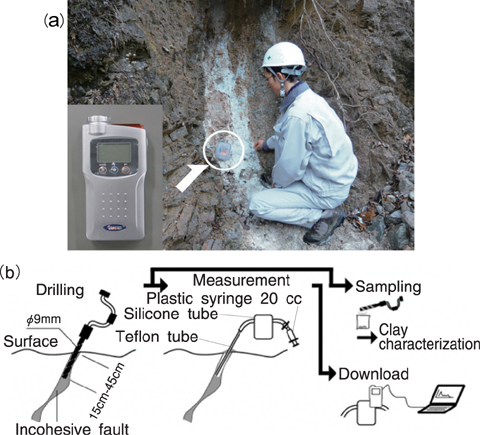
Fig.2-12 Hydrogen measurement in fault zone (a) and process flow of hydrogen measurement (b)
Fig.2-13 Distribution of density of hydrogen gas around Yamazaki fault zone
Research on the influence of fault activity on deep geological environments contributes to the reliability of geological disposal systems for high level radioactive wastes. The permeability of a fault zone tends to be higher than the surrounding bedrock. Thus, it is important to understand the long-term changes of regional groundwater flow around the fault zone, where a wide crushed bedrock zone frequently exists. We are examining the applicability of an investigation technique using hydrogen gas emission from fracture zone.
It has been observed that the hydrogen gas emitted from underground along the active fault exceeds the atmospheric concentration (ca.0.5ppm). Various laboratory experiments have shown that hydrogen gas is generated during fracturing of rocks in deep underground near the hypocenter of an earthquake. It is reported that the hydrogen gas migrates to ground surface along the same fractures through which groundwater flows. Therefore, we expected that in this way we could estimate hydraulic properties such as the groundwater pathways and the continuity of fractured rock zones around the fault.
To determine hydraulic flow properties around an active fault, it is necessary to measure the concentration distribution of hydrogen gas over a wide area. However, the conventional hydrogen gas measurement tool is a large device requiring a day or more to accurately measure concentration of hydrogen gas discharged from underground. Therefore, we developed a new measuring tool using portable hydrogen gas detectors which enables measurement of many points in a short time (Fig.2-12). We investigated the concentration of hydrogen gas emitted from the Yamasaki fault zone, in southeast Japan. The Yamasaki fault zone is one of the major active faults in Japan which caused the A.D. 868 Harima Earthquake. In our survey, the points where high concentrations of hydrogen gas emission was detected were unevenly distributed along the active fault, and in the southeast portion of the study area where small earthquakes frequently occurred (Fig.2-13).
Based on these results, we will carry out the measurement of hydrogen gas emission in many study areas to obtain basic information on hydraulic flow properties around the fault by and also to understand the relationship between emitted gas concentration distribution and properties of the geologic structure.